Serving 2,559 students in grades 9-12, O Fallon High School ranks in the top 30% of all schools in Illinois for overall test scores (math proficiency is top 30%, and reading proficiency is top 30%).
The percentage of students achieving proficiency in math is 32% (which is higher than the Illinois state average of 28%). The percentage of students achieving proficiency in reading/language arts is 42% (which is higher than the Illinois state average of 30%).
The student:teacher ratio of 17:1 is higher than the Illinois state level of 13:1.
Minority enrollment is 41% of the student body (majority Black), which is lower than the Illinois state average of 55% (majority Hispanic).
Quick Stats (2025)
- Grades: 9-12
- Enrollment: 2,559 students
- Student:Teacher Ratio: 17:1
- Minority Enrollment: 41%
- Graduation Rate: 91% (Top 50% in IL)
- Overall Testing Rank: Top 30%
- Math Proficiency: 32% (Top 30%)
- Reading Proficiency: 42% (Top 30%)
- Science Proficiency: 59% (Top 50%)
- Source: National Center for Education Statistics (NCES), IL Dept. of Education
School Overview
O Fallon High School's student population of 2,559 students has grown by 6% over five school years.
The teacher population of 155 teachers has grown by 13% over five school years.
Grades Offered
Grades 9-12
Total Students
2,559 students
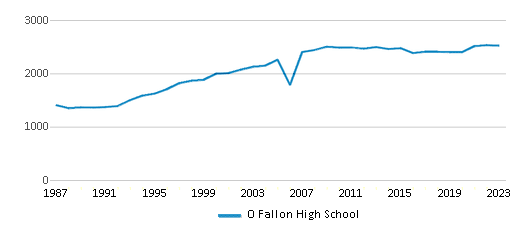
Gender %
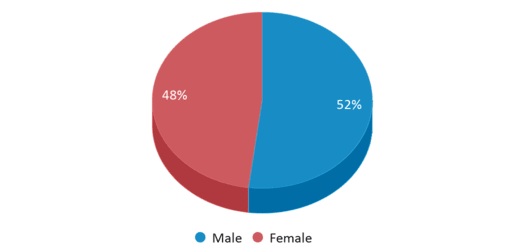
Total Classroom Teachers
155 teachers
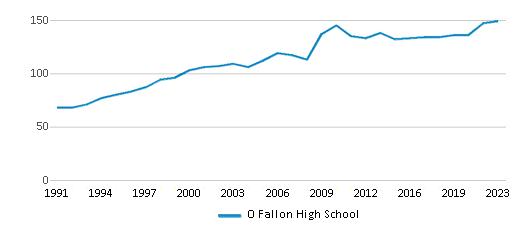
Students by Grade
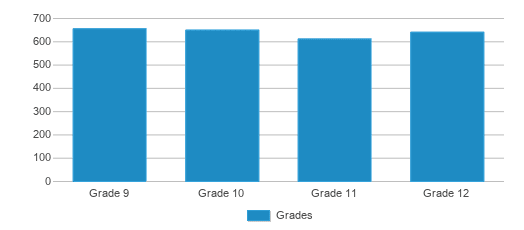
School Rankings
O Fallon High School ranks within the top 30% of all 3,426 schools in Illinois (based off of combined math and reading proficiency testing data).
The diversity score of O Fallon High School is 0.60, which is less than the diversity score at state average of 0.70. The school's diversity has stayed relatively flat over five school years.
Overall Testing Rank
#777 out of 3426 schools
(Top 30%)
(Top 30%)
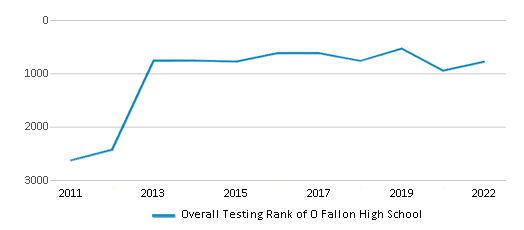
Math Test Scores (% Proficient)
(20-21)32%
28%
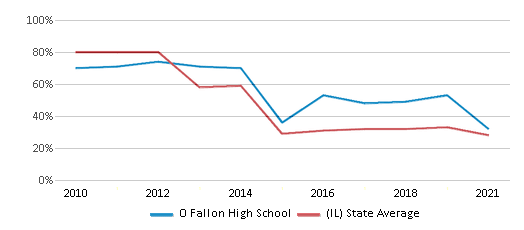
Reading/Language Arts Test Scores (% Proficient)
42%
30%
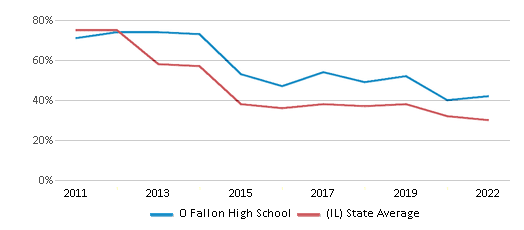
Science Test Scores (% Proficient)
59%
50%
Student : Teacher Ratio
17:1
13:1
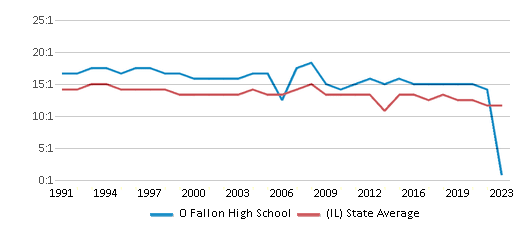
American Indian
n/a
1%
Asian
3%
6%
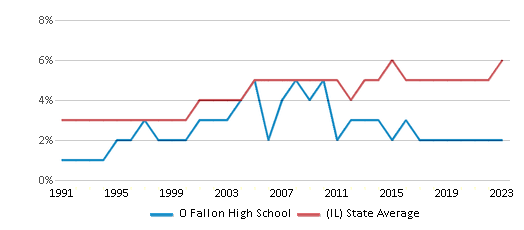
Hispanic
8%
28%
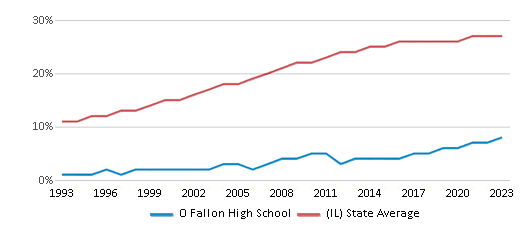
Black
22%
16%
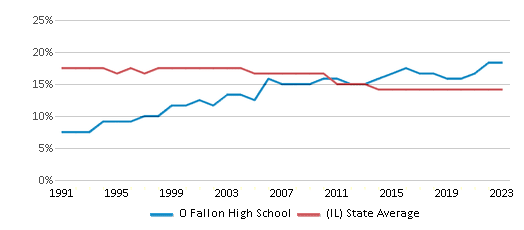
White
59%
45%
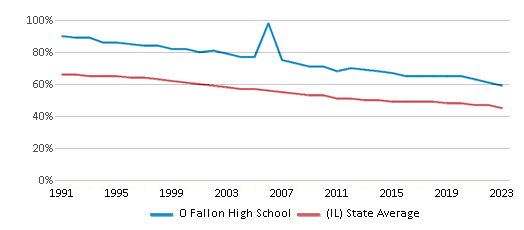
Hawaiian
n/a
n/a
Two or more races
8%
4%
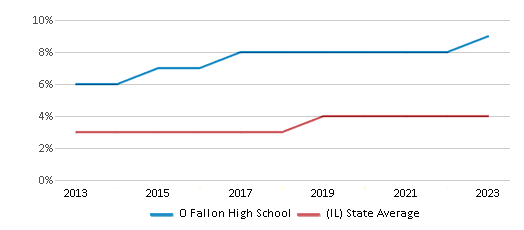
All Ethnic Groups
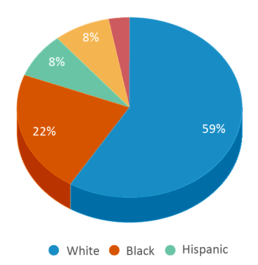
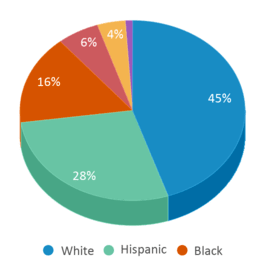
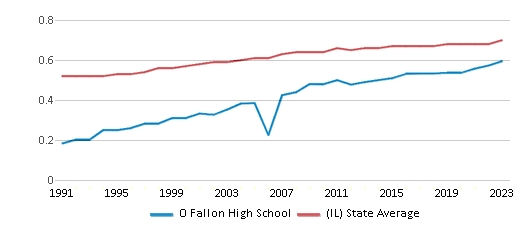
Graduation Rate
91%
87%
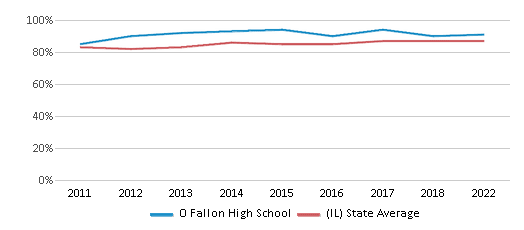
Eligible for Free Lunch
16%
43%
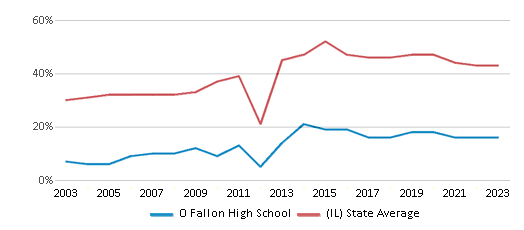
Eligible for Reduced Lunch
7%
4%

School Statewide Testing
School District Name
Source: National Center for Education Statistics (NCES), IL Dept. of Education
Profile last updated: 02/09/2025
Frequently Asked Questions
What is O Fallon High School's ranking?
O Fallon High School is ranked #777 out of 3,426 schools, which ranks it among the top 30% of public schools in Illinois.
What schools are O Fallon High School often compared to?
O Fallon High Schoolis often viewed alongside schools like Mascoutah High School by visitors of our site.
What percent of students have achieved state testing proficiency in math and reading?
32% of students have achieved math proficiency (compared to the 28% IL state average), while 42% of students have achieved reading proficiency (compared to the 30% IL state average).
What is the graduation rate of O Fallon High School?
The graduation rate of O Fallon High School is 91%, which is higher than the Illinois state average of 87%.
How many students attend O Fallon High School?
2,559 students attend O Fallon High School.
What is the racial composition of the student body?
59% of O Fallon High School students are White, 22% of students are Black, 8% of students are Hispanic, 8% of students are Two or more races, and 3% of students are Asian.
What is the student:teacher ratio of O Fallon High School?
O Fallon High School has a student ration of 17:1, which is higher than the Illinois state average of 13:1.
What grades does O Fallon High School offer ?
O Fallon High School offers enrollment in grades 9-12
What school district is O Fallon High School part of?
O Fallon High School is part of O Fallon TWP HSD 203 School District.
School Reviews
5 7/27/2012
The teachers are, for the most part, professional and consistent. Extracurricular activities are vastly upheld and the men and women who coordinate them work very hard. This school is a small-town high school, obviously, yet everyone finds their niche. Administration is slightly inert but the guidance counselors are excellent. Sports are great; the music programs are just as great, if not better.
Do not forget that the teachers of the Milburn (freshman) campus are trained and experienced in high school education. So, they will not be keeping your child in middle school standards, although the building is quite detached from the rest of the high school. They will be treated as high schoolers. Also, true maturity is not based on imitating elders (the sophomores, juniors, and especially seniors.) Exposure to the students of those grades is not absolutely necessary. Allow your child to rise above the rest, through their own experience, and it will stick longer than impression of emotional aging that is created just for peer approval.
5 4/15/2008
I am currently a freshmen at O'Fallon Township High School after I moved from New York. I was originally goig to move to St. Louis but my mother found out what a great school it was and couldn't resist. Academic Programs are excellent and their extracurricular activities are amazing! Everybody comes out to the school sports and attend the music concerts. In the back of the school handbook there are pages filled with different types of clubs and activities. The level of parent involvement is awesome! I recently went to a girl's lacrosse game and there was a team of mothers selling candy and snacks to help raise money for the girls.
Review O Fallon High School. Reviews should be a few sentences in length. Please include any comments on:
- Quality of academic programs, teachers, and facilities
- Availability of music, art, sports and other extracurricular activities
Recent Articles

What Is A Charter School?
Explore the world of charter schools in this comprehensive guide. Learn about their history, how they operate, and the pros and cons of this educational innovation. Discover key facts about charter schools, including admission policies, demographics, and funding, as well as what to look for when considering a charter school for your child.

10 Reasons Why High School Sports Benefit Students
Discover the 10 compelling reasons why high school sports are beneficial for students. This comprehensive article explores how athletics enhance academic performance, foster personal growth, and develop crucial life skills. From improved fitness and time management to leadership development and community representation, learn why participating in high school sports can be a game-changer for students' overall success and well-being.

February 05, 2025
Understanding the U.S. Department of Education: Structure, Impact, and EvolutionWe explore how the Department of Education shapes American education, from its cabinet-level leadership to its impact on millions of students, written for general audiences seeking clarity on this vital institution.





